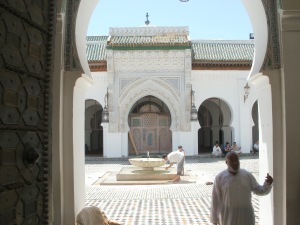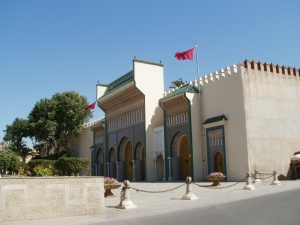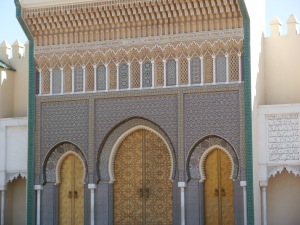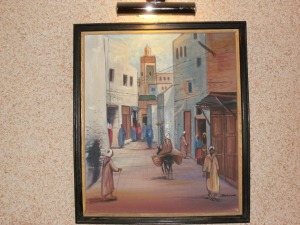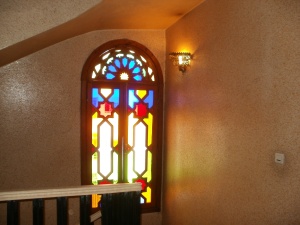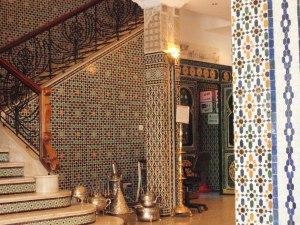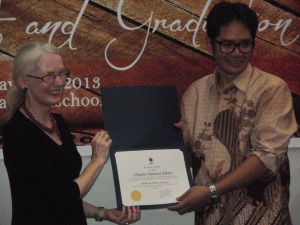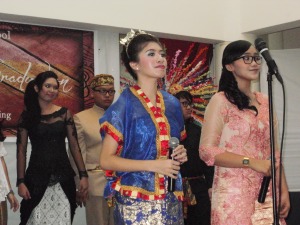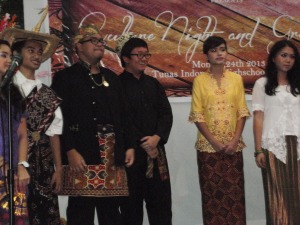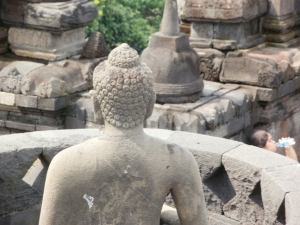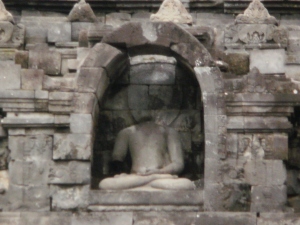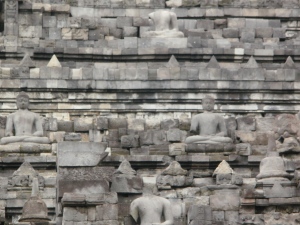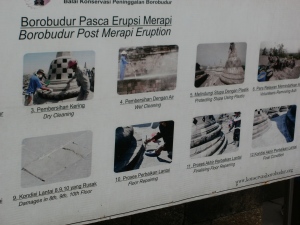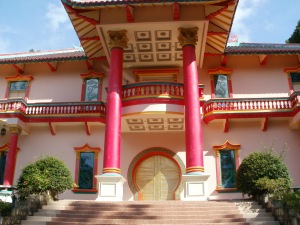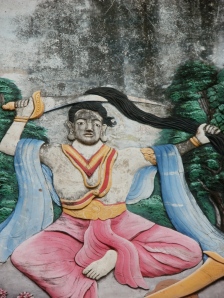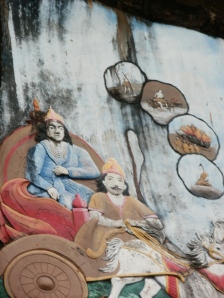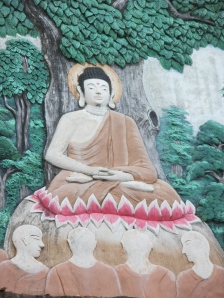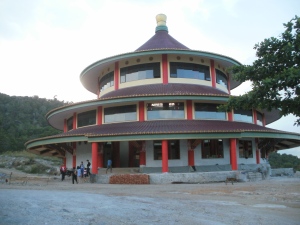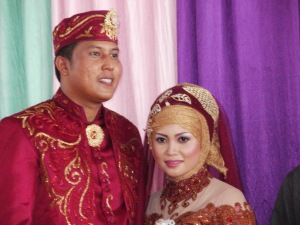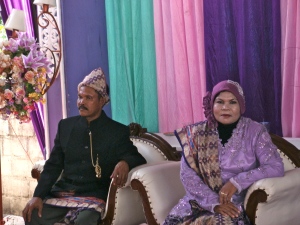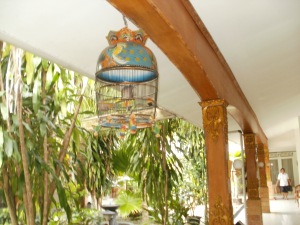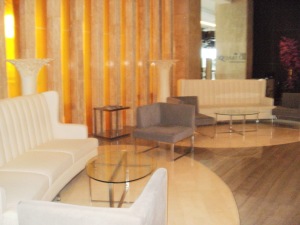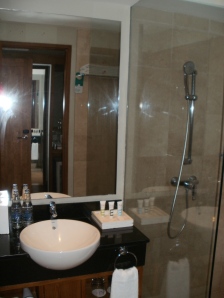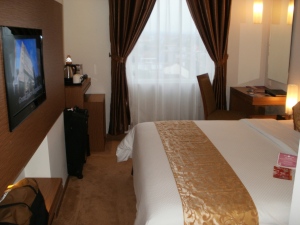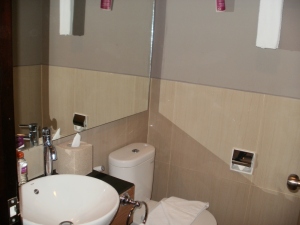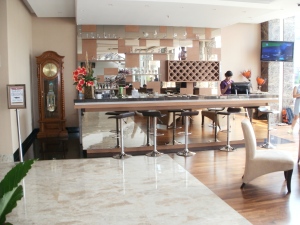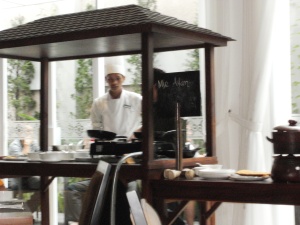On Friday June 28th, my guide took me to the University of Al-Karaouine located in Fez, Morocco, this university was originally a mosque founded in 859 by Fatima al-Fihri, a woman. It developed into one of the leading Universities for Natural Sciences. This university is considered the oldest continuously degree-granting university in the world.
GEEO Morocco Royal Palace of Fez Visit
The Royal Palace of Fez also known as the Dar el Makhen is one of the oldest and largest imperial palaces in Morocco. Built around the 14th century on 200 acres in Fes, a city comprised of only 800 acres total. This working palace was built by the Merinides. The Marinid dynasty was a dynasty of Zenata Berber descent that ruled Morocco from 13th to the 15th century. The Marinid dynasty also built the cousin to the Alhambra Palace of Grenada Spain. It was under the Marinid dynasty that Fes developed its reputation as an important intellectual center.
GEEO Morocco Trip June 27th-July 8th
On Friday June 28th, I joined my wonderful group of fellow teachers and adventure seekers in Fez, Morocco. Since my travels from Indonesia with TGC postponed my arrival in Morocco, I was immediately welcomed into the group. My day began with a private tour/driver of the sights visited by the group on the previous day. Here are some photos of our hotel In Fez, the Hotel Mounia.
Farewell Indonesia
Our final night in Jakarta, Indonesia ended with a Cultural Night Event/Graduation for Charles Albert’s students. We were all given presents of shadow puppets and entertained by student performing dances, singing as well as other acts. Charles (pronounced Char- less) and his students have left an indelible impact on all of us.
The Candi Mendut Buddhist Monastery near Borobudur,Indonesia
Approximately 45 minutes northeast of Borobudur one finds the beautiful Candi Mendut Buddhist Monastery. This incredibly serene place sits on a hill in the town of Muntilan in the Magelang District. There are no high walls to separate visitors from viewing up close and personal the spectacular reclining Buddha, large marble bell-shaped stupas, manicured lawns and lush foliage. This is an excellent place to visit as a preview to awesome Borobudur.




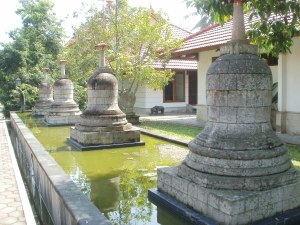
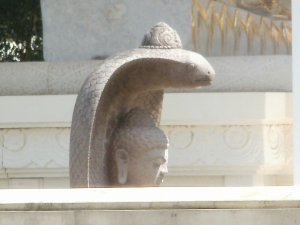
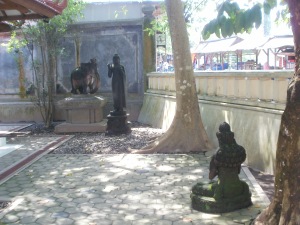
What Lies Beneath? Borobudur, a Buddhist Temple in Jogyakarta, Indonesia
Each of the monument’s three main levels represents a stage on the way to the bodhisattva ideal of enlightenment; symbolizing this spiritual journey, a pilgrim begins at the eastern stairway and walks clockwise around each of the monument’s nine levels before reaching the top, a distance of more than 3 miles (5 km). At the lowest level, which is partially hidden, are hundreds of reliefs of earthly desires, illustrating kama-dhatu (“the realm of feeling”), the lowest sphere of the Mahayana Buddhist universe. On the next level, a series of reliefs depict rupa-dhatu (the middle sphere and “the realm of form”) through events in the life of the Gautama Buddha and scenes from the Jatakas (stories of his previous lives). The upper level illustrates arupa-dhatu, “the realm of formlessness,” or detachment from the physical world; there is little decoration, but lining the terraces are 72 bell-shaped stupas, many still containing a statue of the Buddha, partly visible through the perforated stonework. During the Waicak ceremony, which occurs once a year during a full moon, thousands of saffron-robed Buddhist monks walk in solemn procession to Borobudur to commemorate the Buddha’s birth, death, and enlightenment.
How to be both loathed and revered: The Sacred Monkeys of Ubud, Bali
The Sacred Monkey Forest-Ubud, Bali
Unlike the majority of Indonesians, most Balinese residents practice a form of Hinduism as opposed to Islam. It is worth noting that Balinese Hinduism is unlike Hinduism practiced in other country’s around the globe such as India. Balinese Hinduism combines aspects of Animism, Ancestor Worship, Buddhism, and Hinduism. Ancestor Worship “represents the belief that prosperity is associated with a relationship that exists between the living and the dead (prosperity is something that can only be achieved through intense worship and obtainment of blessings from ancestors). Animism represents the belief that inanimate objects and other elements of the natural landscape can possess souls which can help as well as hinder human efforts on earth.”
What is the cultural significance of Monkeys to the Balinese? Within Balinese Hinduism, monkeys can be the embodiment of both positive and negative forces. The famous Indian epic poem, Ramayana also depicts the dual nature of monkeys. In general, because monkey’s can embody both positive and negative forces, the Balinese both loathe and revere Monkeys, especially the long-tailed Macaques who live in the Scared Monkey Forest and find protection by the Balinese.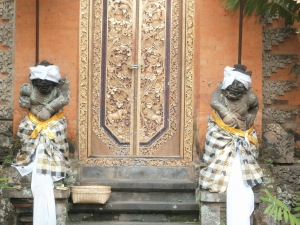

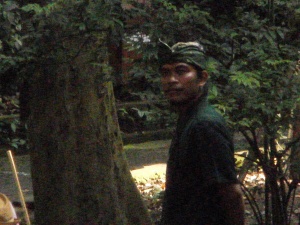
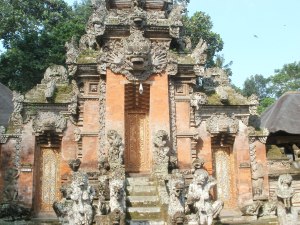






The Chinese Presence in Bangka, Indonesia
According to the Jakarta Post, the history of the Chinese on the island, which is famous for its rich tin deposits, dates back hundreds of years. The Dutch came to the island to mine the tin and sell it in Europe. Kui Fong said the Dutch, about three centuries ago, brought Chinese migrants from China to Bangka to work in the tin mines. However, few of the Chinese-Indonesians of Bangka today know anything about their ancestral villages in China. “”I do not know where my ancestral village in China is as my parents never told me about it,”” 45-year-old Heri, or Asiong, head of Gedong village, told the Post.
The Chinese of Indonesia and their Search for Identity by Aimee Dawis examines how the Indonesian Chinese who were born after 1966 negotiate meanings about their culture and identity through their collective memory of growing up in a restrictive media environment that specifically curtailed Chinese language and culture. The restrictive media environment was the result of a series of policies administered during the Suharto era (1965–1998). According to the regulations, the Indonesian government closed all Chinese-language schools and prohibited the use of Chinese characters in public places, the import of Chinese-language publications, and all public forms and expressions of Chinese culture.
In 1998 when the Asian stock markets tumbled and Indonesia was hit hard by a massive economic crisis, the Chinese of Indonesia were scapegoated for the country’s problems in a manner reminiscent of Jews during the Holocaust. The Chinese were partly scapegoated because of their lack of political power and government protection. According to Wikipedia, “Discrimination, distrust, and violence against Chinese Indonesians is caused in part by a perception that they are still loyal to China, and only see Indonesia as a place to live and work. They are also seen as being ‘exclusive’, unwilling to mingle with other ethnic groups, as well as discriminating against native Indonesians in their business relations.” Bangka now stands as a beacon of tolerance and acceptance as its residents were among the few Indonesians who provided the Chinese with refuge during their violent persecution and attacks during the Suharto era.
http://www.guardian.co.uk/world/2012/aug/21/ethnic-chinese-new-indonesia-future
The Most Welcomed Uninvited Guests at a Bangka, Indonesia Wedding
According to tradition, the newly married couple does not live near either set of parents. This practice prevents undue influence from either group of relatives. As a result there are many mixed marriages between the Bangka and other ethnic groups that have come into the area. This outside influence can be seen in their wedding customs. The engagement ceremony is typically done in a traditional singing dialogue. Islamic influence is evident in the wedding procession which is accompanied by tambourines and drums. On last Sunday afternoon, I found myself to be a guest at the wedding of a young Bangkanese Muslim couple who seemed genuinely happy to have me and my fellow American interlopers celebrate in their most special, joyous day. In fact, Seth serenaded the bride with an impromptu version of the One Direction hit–What Makes you Beautiful. We were fed delicious traditional food and peppered with several questions by the younger relatives of the groom who asked with earnest why Americans hate Muslims? My colleague Seth informed him that we do not hate Muslims in America, we hate terrorists who happen to be Muslims. Unfortunately, he was not able to attend my lecture on Uncovering Islamophobia in the Western Media.
Home Away from Home –The Hotel Centrum, Novotel Bangka, Mercure Harvestland Kuta, Bali and Grand Tjokro Yogyakarta
The first Hotel we stayed at in Bangka is best described as quaint, charming, and reminiscent of Grandma’s house. One is immediately struck by the scent of moth balls that greet us when we enter the lobby of the hotel. The rooms are spacious, clean and the staff is very friendly and eager to help despite the language barrier. On Saturday night, the outside patio became host to a jazz band who played many well known U.S. cover versions of popular music from the 1990s. The Hotel itself is located right in the middle of town. It is a bit congested and very humid. Despite the narrow to invisible sidewalks, Seth and I ventured out by foot during our first day and enjoyed the Bangkanese equivalent of fast food at a restaurant called Metro chicken. We both ordered a chicken and rice bowls and strawberry fantas. After three nights at the Hotel Centrum, we decided to move to the Novotel Bangka Golf resort near the airport. This modern, upscale hotel turned out to be much cheaper than the Hotel Centrum. While at the Novotel, I have enjoyed the wider selection of cable shows, the restaurant, working air conditioning and the convenience of the Garuda airlines in the lobby as we plan for our trip to Yogyakarta and Bali prior to rejoining the group on Sunday June 23rd for a debrief. Based on the positive experience of the Mercure in Jakarta, we decided to stay at the Mercure Harvestland Kuta outside the main tourist area. We also decide to use agoda.com to book our hotels we stumbled upon the recently opened Grand Tjokro. Needless to say, we were not disappointed by the amenities. My only complaint would be that the rooms are quite small.




